Tag: Sustainable Development
What Does The Earth Day Signify to You?
What Does The Earth Day Signify to You?
I hope you are paying attention to the amount of garbage that people throw into our environment and our nature, almost everywhere. At least here in Finland, some people think it is normal to throw all kinds of garbage e.g. through the car window, from their boat etc. It looks horrible when you walk on the streets, and in nature. All the garbage on the walkways and streets, in the forests, lakes, everywhere. Throwing garbage into nature should be illegal.
You are smarter than that. You do not throw any kind of garbage/waste into nature. Perhaps you make others aware of this too, or even pick up some garbage while walking in nature.
Natural resources are becoming scarcer and more vulnerable. Our environment and nature cannot keep up with our current consumption habits. It is time to rethink, recycle, manage our resources better and with improved sustainability, because with a rapidly growing world population this planet becomes more crowded than ever before, while our environment has already suffered significantly. The evidence is everywhere: in our air, in our soil, in our water bodies.
In many major urban areas and cities worldwide, the air has become so polluted that people have to wear respirator masks due to toxic air quality. In many polluted cities, the air quality is so poor that you cannot even see the sky, at least not a natural sky. Instead, it is blocked by dirt and pollution, falling down on the ground as toxic rain or simply as toxic particles.
As a result of poor soil and wastewater management, whereby most of all wastewater is being dumped directly back into nature without any kind of prior purifying treatment, our soils are suffering from many kinds of problems, including acidity. Poor soil management leads to many additional problems, such as erosion, and a significant fall in nutrients in crops and plants.
Our water bodies, rivers, lakes, seas, and oceans, are more acidic than before. The actual numbers may sound low, but even small changes in acidity or chemical structure of a water body will have significant impacts and (possibly) lead to major problems not only in the water bodies themselves, including flora and fauna, but also to all life on Earth.
All vegetation on this planet, including forests, protect us from harmful toxins in the environment and in nature. Forests and trees all around our planet absorb much of the carbon dioxide and other pollution released into our atmosphere by human activities. Growing deforestation and poor forestry lead to additional environmental problems. Depending upon the environment and type of tree, it takes many years, even several decades, to replace a cut down tree by a new one.
Environmental protection and sustainable development is not only a task for environmentalists. It is something that concerns all of us. Every day. Everywhere. Us human beings cannot keep up with current practices, or how industrialization in the past century or two have impacted our environment and nature. Protecting the environment is not equal to giving up a good lifestyle. On the contrary, protecting our environment and developing sustainable economies will in fact improve our lives in terms of a healthy environment, air, soil, and water quality.
Thank you for taking the time to read this post. Looking forward to your comments. If you found this post helpful, do share it with your digital networks.
Connect with me on Twitter @annemariayritys – for climate/environment-related posts only @GCCThinkActTank. Subscribe to Yritys Executive Services to receive my newsletter delivered personally to you.
Climate Warming Increases Impacts on Arctic Ecosystems
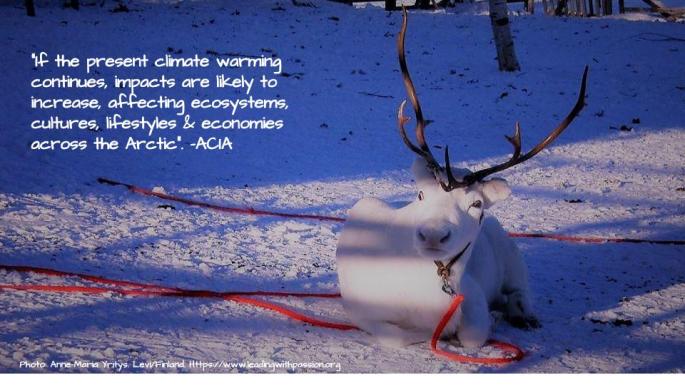
Climate change and climate warming in the Arctic Region (parts of the United States, Canada, Denmark (Greenland), Iceland, Norway, Sweden, Finland and Russia), at least in the short-term, brings completely new economic opportunities to the region overall. A major opportunity is tourism, although it is questionable whether an increase in tourism in the Arctic region is a consequence of climate change and warming, or rather a question of marketing. Should we rather ask what the consequences of an increase in tourism has on the Arctic region? And, how tourism can be developed in a sustainable way, with as little as possible negative impacts on the environment.
Tourism itself is not the actual problem, since it leads to economic development and growth in any region. The possible problems include the effects of everything that has to do with tourism, such as energy and transport. In fact, offering tourists for example increasingly much direct flights to a tourist destination has less environmental impacts than inefficient flight routes.
After the slump and financial crisis in Iceland 2008-2011, the islands tourism is today flourishing more than ever, as is the tourism in Finnish Lapland. In Iceland this has led to a drastic increase in prices, which of course has nothing to do with climate change. In Finnish Lapland, however, where ski races are being organized each winter, artificial snow has been used for years already since there has not been enough natural snowfall before and during the annual ski races. In fact, although South Korea is not part of the Arctic region, it is hosting the upcoming 2018 Winter Olympics. Due to a (risk of) lack of snow, the PyeongChang Winter Olympics 2018 has to rely upon artificial, imported snow. Lack of snow around the world, including the Arctic region, is becoming so common that it is already a reality that artificial snow has to be depended upon.
Understanding and responding to the challenges, risks/threats and opportunities with a changing climate in the Arctic region is not an unequivocal task. Some find completely new business opportunities through the warming of the region (and, the whole world), such as creating artificial snow. In short, an ice-free Arctic sea is by many businesses regarded as a huge opportunity to save costs, regardless of the possible risks involved in e.g. shipping through the Arctic sea. What businesses and consumers must realize is how to develop sustainable practices and how to ensure as little as possible environmental damage.
Learn more about sustainability by watching University of Copenhagen´s (UCPH) video “Sustainability Lecture: Community Health and Sustainability in Arctic Alaska”:
Connect with me on Twitter @annemariayritys. For climate/environment-related posts only @GCCThinkActTank. Subscribe to Leading With Passion to receive my latest posts.
Take a step further to create YOUR online business. Learn more about the many benefits of how to create a beautiful website with WordPress.com and how to monetize your blog/website:
WordPress.com – Create A Beautiful Website
Jetpack – The ideal way to experience WordPress – Code-free Customization
WooCommerce – The most customizable eCommerce platform for building your online business
What is The Future of the Arctic?

“The future of the Arctic and its biodiversity requires an active and decisive approach to conservation and sustainability”. -The Arctic Council
When communicating about conservation and sustainability, it is necessary to have a lot of faith in addition to actually taking even radical actions towards creating a sustainable future for our environment and our whole home planet.
With so many disasters worldwide, all the catastrophic news and forecasts about what will soon happen with Earth, its environment and its population, it is easy to choose either to close one´s eyes and other senses, become insensitive, blind and indifferent to reality, or, become cynical, or, become skeptic, even angry and frustrated. However, this is not a time to give up. In times of (environmental) crises we need strong leaders and efficient leadership: people around the world who will step up and take necessary actions to ensure that we will have life upon Earth left by the end of this century, that we can create sustainable economies and save what is possible to save before we actually end up having a climate catastrophe.
It is up to both individual and co-operative practices everywhere upon Earth to prevent further damage through the release of dangerous toxins, including black coal, greenhouse gases and other pollutants that damage our environment as a whole, including everything and everyone that lives on Earth. How this can and will be done is a question about energy efficiency and overall consumption habits of human beings upon Earth. We already have all the necessary knowledge and technology to create sustainable environments. The question is, how well can our planet cope with the rapidly warming climate, the rapidly growing population and all the destruction that us human beings have already caused?
Who knows with certainty what the future of the Arctic looks like? If the current development continues, the Arctic glaciers will continue melting at an unimaginable speed, warming the climate in the Arctic region and elsewhere upon Earth. Who knows if we can afford the continued melting of the Arctic region´s glaciers, ice sheets, and permafrost? How will these changes affect other regions upon Earth? Will this e.g. accelerate the expansion of the Sahara desert into the South? Will the melting Arctic region lead to increasingly much drought and floods around the world? Who has the answers to these questions?
Learn more by watching Understanding Climate Change´s video “The Once and Future Arctic: Prof Stephanie Pfirman (February 2017):
Connect with me on Twitter @annemariayritys. For climate/environment-related posts only @GCCThinkActTank. Subscribe to Leading With Passion to receive my latest posts.
Take a step further to create YOUR online business. Learn more about the many benefits of how to create a beautiful website with WordPress.com and how to monetize your blog/website:
WordPress.com – Create A Beautiful Website
Jetpack – The ideal way to experience WordPress – Code-free Customization
WooCommerce – The most customizable eCommerce platform for building your online business
How To Guarantee Arctic Environmental Well-Being?

With so much dangerous toxins, greenhouse gases, and pollution from e.g. industrial waste and the inefficient burning of black coal in Earth´s atmosphere, how can we ensure that these toxins and pollutants do not end up anywhere in our environment, especially in the Arctic region which warms at least twice as fast as the rest of our planet?
There is no other way of preventing harmful pollutants of destroying our environment, including ourselves, than removing them completely from our way of living. Yet, with the technologies and methods of production we use today, this prevention seems impossible. How long will it take until we destroy ourselves and our home planet? According to the most optimistic prognoses, we have this century left. Others say, only a few decades. Others say, only a few years or at the maximum, a decade. Are we headed towards a climate catastrophe? Let us hope that we do not, and that we still have time to take action.
This is one of the main messages of the UN Sustainable Development Goals (SDG´s) that are a continuum to the Millennium Development Goals – UN SDG Goal Number 13: Take URGENT action to combat climate change and its impacts.
This is no joke, really. These goals were all set for an extremely important reason. In fact, all of the 17 Sustainable Development Goals are in one way or the other interlinked to climate action and climate change. Learn more about UN´s Sustainable Development Goals here.
We have NO time to wast. We must all take action now, both on individual, business, organizational, and governmental levels. Especially much responsibility must be taken by the largest emitters on this planet: China, The U.S.A. and the European Union. Those who destroy and pollute the most must act NOW and transform their economies into increasingly much sustainable places of living. This is not something concerning only the Arctic region, although this is where the warming of the planet is faster than elsewhere. Right now, in the COP23 Climate Summit in Bonn, hosted by Fiji, sea level rise and its threat to millions and millions of people worldwide is being discussed very seriously. If we cannot prevent sea levels from rising, swallowing up whole islands and coastal cities around the world, what will the future look like for these people? Where will they live? What will they eat? How will they produce food in environments and climates that change so rapidly that our current ways of producing food are unsustainable? If you have answers, please let me know, or at least take action upon them. For example in Finland completely new ways of food production are already being implemented by experimental and progressive businesses that have foreseen what we have ahead of us.
Learn more about the melting Arctic by watching European Environment Agency´s video “Melting Arctic: Environmental Atlas of Europe – Greenland”:
Connect with me on Twitter @annemariayritys. For climate/environment-related posts only @GCCThinkActTank. Subscribe to Leading With Passion to receive my latest posts.
Take a step further to create YOUR online business. Learn more about the many benefits of how to create a beautiful website with WordPress.com and how to monetize your blog/website:
WordPress.com – Create A Beautiful Website
Jetpack – The ideal way to experience WordPress – Code-free Customization
WooCommerce – The most customizable eCommerce platform for building your online business
Arctic Hunting & Fishing Under Threat

Why are hunting and fishing in the Arctic region under serious threat, and why does this have to be taken seriously? Do we not have enough marine life and wildlife to keep up with our fishing and hunting methods the way we always have? Even in the fragile and vulnerable Arctic region, which is home to millions of people, many of whom belong to indigenous communities and have always lived according to the laws of nature, depending completely upon the food that the Arctic region has to offer. The unique Arctic region, which is also home to a unique flora and fauna.
It is no longer news that the Arctic region´s climate is warming, and at least twice as fast as elsewhere on our planet. Nevertheless, the importance of bringing awareness about these changes in climate to citizens of this world is more important than ever. With incomplete understanding about what is taking place with the climate in the Arctic, it is challenging for people to take action. Thus, your voice does matter. Your improved actions do matter – despite of the fact that the inefficient burning of black coal is the major single contributor to climate warming in the Arctic region, and thus the industries burning black coal inefficiently. We can all contribute on an individual level, even through small actions and choices that contribute to improvements in how energy is being used worldwide.
According to EU Arctic – Strategic Environmental Impact Assessment of development of the Arctic, the inefficient burning of black coal is the one single largest contributor of climate warming in the Arctic region. Energy efficiency and the improvement of black coal-burning practices, or its complete abolishing, therefore, are pivotal in order to slow down the (Arctic) climate from warming. Currently, the majority of black coal pollution finds it way to the Arctic from Asian countries, drifting all the way to the Arctic region through air currents. Yet, the (inefficient) burning of black coal is not the only pollutant affecting the Arctic region.
In short, the Arctic region´s climate is warming drastically fast: when glaciers melt, many of the species at home in the Arctic environment are being threatened by complete extinction. Perhaps the best known of these species is the polar bear. If and when species that depend upon the Arctic region´s unique climate lose their living environment, this will lead to catastrophic consequences not only for all of these endangered species, but also to millions of people who depend upon these species in order to thrive and to survive.
Learn more by watching Al Jazeera´s reportage about “Arctic way of living under threat”:
Connect with me on Twitter @annemariayritys. For climate/environment-related posts only @GCCThinkActTank. Subscribe to Leading With Passion to receive my latest posts.
Take a step further to create YOUR online business. Learn more about the many benefits of how to create a beautiful website with WordPress.com and how to monetize your blog/website:
WordPress.com – Create A Beautiful Website
Jetpack – The ideal way to experience WordPress – Code-free Customization
WooCommerce – The most customizable eCommerce platform for building your online business
Why Does The Arctic Region Influence Climate Change Worldwide?
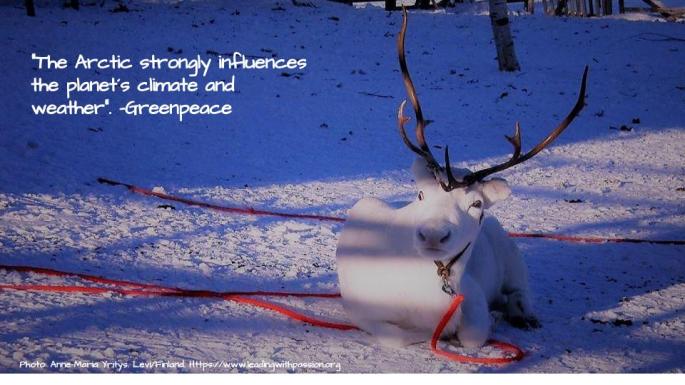
Repetition is the mother of learning, so in order to really understand what is happening with our global weather patterns and climate, we have to repeat what is happening in the Arctic region until we internalize what is going on in the North Pole and the whole Arctic region.
The Arctic region, which consists of the Arctic Sea and adjoining seas, Iceland, the Faroe Islands, parts of the U.S.A., Canada, Greenland, Norway, Sweden, Finland and Russia, is home to millions of people, thousands of animal species and a unique environment. It has been an important source of food for a vast amount of world population through e.g. its fish population, and the region also holds around 25% of the world´s untapped oil reservoirs – oil reservoirs that some countries and companies would like to exploit, without any concern about the region´s sustainability or environmental well-being.
Within a few years only, the Arctic Sea will become completely ice free during summer months for the first time in human history. This, equally, seems to be a welcomed news to some corporations that see the possible economic benefits of shortened trade routes from Asia to Europe, careless about the environment.
The problem of a warming Arctic region is that the dangers and damages upon the Earth´s atmosphere and climate are far more concerning and pose a real threat to all life upon our planet. In my previous posts I have written many arguments to why climate change in the Arctic is detrimental, even dangerous for the whole world. According to already existing research, the warming of the Arctic region accelerates climate change all around the world. It also releases increasingly much carbon dioxide and methane into Earth´s atmosphere, damaging our planet even more with these harmful greenhouse gases.
Expand your knowledge about the Arctic region and its influences on our whole planet by watching Earth Institute´s “Warming Arctic, Changing Planet”:
Connect with me on Twitter @annemariayritys. For climate/environment-related posts only @GCCThinkActTank. Subscribe to Leading With Passion to receive my latest posts.
Take a step further to create YOUR online business. Learn more about the many benefits of how to create a beautiful website with WordPress.com and how to monetize your blog/website:
WordPress.com – Create A Beautiful Website
Jetpack – The ideal way to experience WordPress – Code-free Customization
WooCommerce – The most customizable eCommerce platform for building your online business
Arctic Climate Change a Global Problem
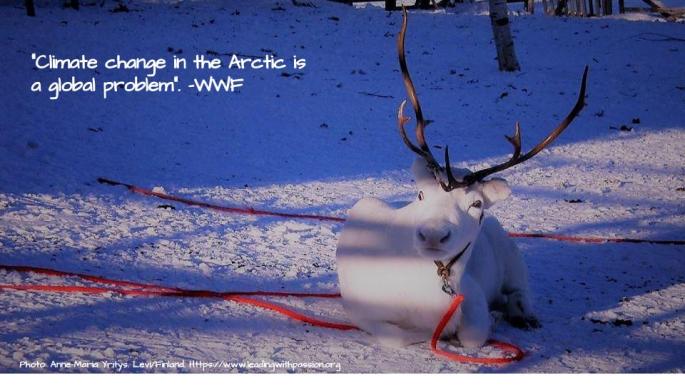
Climate change in the Arctic is a global problem. Why? If you have not yet read my previous posts about climate change in the Arctic region, you will find the response by doing so. You can access some of my previous posts here:
Why is The Arctic Experiencing Social & Environmental Changes?
What is Arctic Climate Change?
Changes In Temperature & Storm Patterns Affecting The Arctic Life
Changes In Temperature & Storm Patterns Affecting The Arctic Life
The Arctic Climate is Warming Dangerously Quickly
Heavy Metals & POPs Concerning Pollutants in the Arctic Region
Why is the Melting of Arctic Sea Ice Dangerous?
Why We Must Protect The Arctic Region
What Does Thawing Permafrost Signify?
Why Are Sea Levels Rising Worldwide?
Why Does Arctic Ice Extent Decrease?
How Do Temperature Shifts Impact the Climate and Environment (in The Arctic)?
Arctic Fisheries About to Disappear
Why is The Gulf Stream About to Halt?
What Contributes to Ocean Acidification?
Acidic Oceans a Threat to Arctic Life
If you are a global citizen, you are perhaps already aware of the fact that everything we do upon this planet has an effect upon life elsewhere. When you eat breakfast in the morning, you have already depended upon about half of this world. When production plants and dirty industry sectors are being transferred to developing countries where production costs are only a fraction of those in industrialized countries, savings may be possible for a certain time period. Nevertheless, it does not remove the problems of unsustainable production, or transport.
For example: many Finnish and international well-known brands have outsourced all of their production to countries like Bangladesh, Cambodia, China and Turkey, just to name a few. The consumer pays exactly the same price as before, for a branded design product that now has only been designed in the country of origin, but produced with the lowest labor costs possible in a country with low labor costs. Does this make any sense? I have personally noticed how the quality of these brands has suffered, and I am not willing to pay anything for e.g. a Finnish expensive brand product which has not been produced in Finland. Why would anyone want to pay a high price for a design product which is no longer produced where it originates? There is a difference between capitalism and sustainable capitalism.
In short, the more the Arctic region warms and is affected by climate change, the more will this affect and have an impact upon our global climate as well.
Learn more about why climate change in the Arctic region is a global problem by watching Link TV´s “Melting Arctic: Assessing the Global Impact”:
Connect with me on Twitter @annemariayritys. For climate/environment-related posts only @GCCThinkActTank. Subscribe to Leading With Passion to receive my latest posts.
Take a step further to create YOUR online business. Learn more about the many benefits of how to create a beautiful website with WordPress.com and how to monetize your blog/website:
WordPress.com – Create A Beautiful Website
Jetpack – The ideal way to experience WordPress – Code-free Customization
WooCommerce – The most customizable eCommerce platform for building your online business
Why is The Arctic Experiencing Social & Environmental Changes?
Do you know what and where the Arctic is situated on our planet? Have you ever visited any of the Arctic regions? If not, you may be surprised at the beauty of the different Arctic regions, its beauty and multitude of flora, fauna and landscapes. The Arctic is the northernmost part of planet Earth, also called the polar north. The Arctic is also the 2nd largest desert in the world, expanding over an area of almost 14 million (14.000.000) square kilometers (km2). As a geographical region, the Arctic includes the Arctic Ocean, adjoining seas, parts of Alaska, Northern Canada, Finland, Greenland, Iceland, Norway, Russia and Sweden. Geographically the Arctic lies between 66.5°N and the North Pole.
As a comparison, Tampere, where I currently live, is situated at 61.5°N. Each degree of latitude is approximately 111 km apart, so I live 5 x 111 km = 555 km south from the Arctic. In fact, the arctic/polar circle in Finland is in Rovaniemi, which lies approximately 600 km north from Tampere by flight. An hours domestic flight from Tampere to Rovaniemi. If not otherwise familiar to you, Rovaniemi is where Santa Claus lives with his reindeers and helpers. It is also where Mika and Marketa Häkkinen (née Ramesova) were wedded just before Christmas 2016.
Alternatively, several hours by bus or train, or by car it takes almost half a day since we have only little highways in Finland, and during winter months speed limits are lower due to weather conditions, something that is of course also better for the environment. If you travel across Finland by car you will notice how little traffic there is e.g. in comparison with Central Europe, e.g Germany and Italy. Of course, since we are a sparsely populated country. The further north you travel in Finland, the less people will you meet: most of population lives in southern Finland.
But how and why does the Arctic experience social and environmental changes? What I know about these changes is mainly through what I read, and hear from relatives living in Finnish Lapland. My father comes from Kittilä, a small municipality situated not far from several tourist resorts, such as Levi/Sirkka and Ylläs. Having spent many holidays in Lapland from childhood on, the region is of course near my heart. Despite of population declining in many sparsely populated areas in Finland, Lapland is perhaps our number one tourist destination, both for domestic and international visitors. Tourism is continuously expanding and growing in Lapland, and Levi/Sirkka has changed/expanded tremendously in the past couple of decades.
A growing tourism is of course beneficial for a region in many ways, especially in terms of economic value. A growing tourism may also have its setbacks, e.g. in terms of maintaining sustainability, taking care of the environment and ecological well-being.
In general, what comes to social and environmental changes and impacts in the whole Arctic region includes:
- The Arctic is home to indigenous people, who have long traditions of living in accordance with nature without as little as possible destruction, if any at all. These indigenous Saami people now report how the climate is changing in the Arctic, e.g. in terms of warming, and weather patterns becoming less predictable.
- Snowfall and snow quality is becoming different, with more icy snow. Sea ice is declining, and water levels in many lakes are dropping.
Learn more about the reported/studied climatic changes in the Arctic by reading e.g. following articles:
GreenFacts (Facts on Health and the Environment)
The Arctic as it is known today is almost certainly gone (The Economist April 29, 2017).
Also watch this short video by NASA – The Arctic and the Antarctic Respond in Opposite Ways:
Connect with me on Twitter @annemariayritys. For climate/environment-related posts only @GCCThinkActTank. Subscribe to Leading With Passion to receive my latest posts.
Take a step further to create YOUR online business. Learn more about the many benefits of how to create a beautiful website with WordPress.com and how to monetize your blog/website:
WordPress.com – Create A Beautiful Website
Jetpack – The ideal way to experience WordPress – Code-free Customization
WooCommerce – The most customizable eCommerce platform for building your online business
Climate Change Knows No National Boundaries

“UN Sustainable Development Goals. Climate change is a global challenge that does not respect national borders.”
=============================================================
The message is clear and simple: Climate change does and will not ask anyone of us, or our countries, whether we want our climate(s) to change. However, one thing is certain: we all have an influence upon our climate, through our consumption habits, and we can all influence how our climate is being shaped now, and in the future. Are you aware of the fact that even a slight increase in our global mean average temperature will have significant impacts on our environment, and on the climate? This is the reason for the Paris Agreement, whereby nations all over the world agreed upon and signed up for the Paris Agreement, legally stating that the signatory countries WILL TAKE ACTION to prevent our climate from further warming through human activities on this planet.
The Paris Agreement does not bind only nations/states and/or decision-makers, but requires for all citizens in the world to take action. Instead of playing a blame-game by throwing dirt on decision-makers only, let YOUR individual voice (and, action!) be heard and seen in how you make necessary changes in your consumption habits, and become a voice/role model for change.
Watch TEDx Talks “Why every action in the fight against climate change counts/Caroline Westblom/TEDxBergen:
Connect with me on Twitter @annemariayritys. For climate/environment-related posts only @GCCThinkActTank. Subscribe to Leading With Passion to receive my latest posts.
Take a step further to create YOUR online business. Learn more about the many benefits of how to create a beautiful website with WordPress.com and how to monetize your blog/website:
WordPress.com – Create A Beautiful Website
Jetpack – The ideal way to experience WordPress – Code-free Customization
WooCommerce – The most customizable eCommerce platform for building your online business


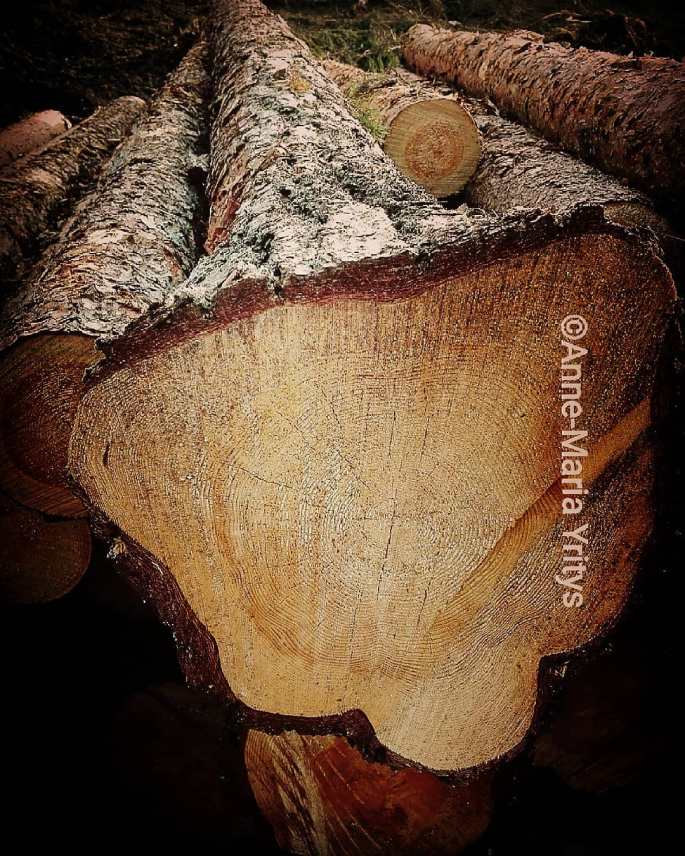


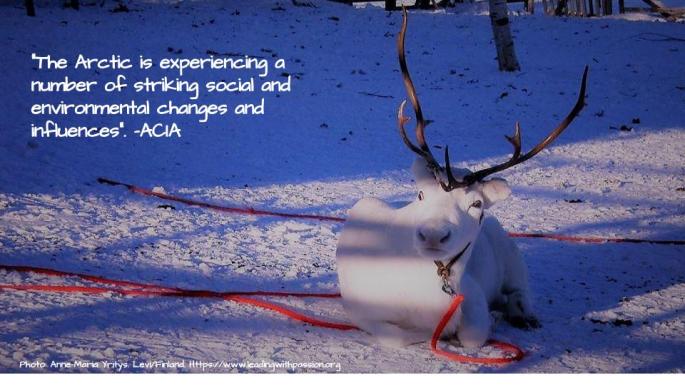

You must be logged in to post a comment.